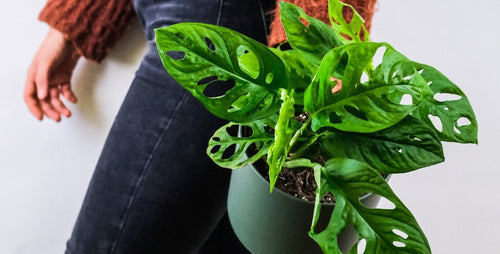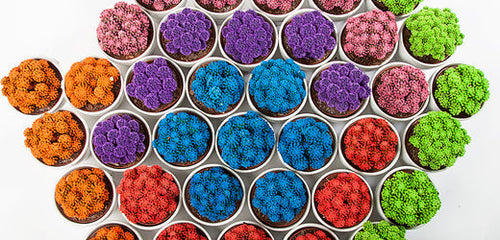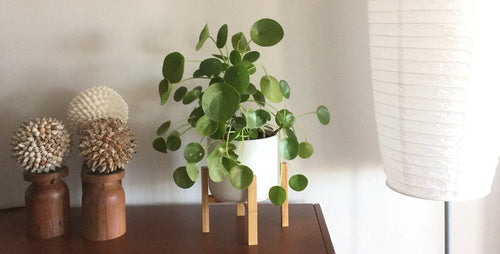Watering your houseplants has a Goldilocks aspect to it—you don’t want too much, nor too little. You want it just right. For most plants it’s better to give them too little water than too much. But you can use these strategies to help prevent and treat overwatering and root rot, giving your plant the best chance at recovery should it occur.
Why Overwatering Is Bad for Houseplants
Wondering why overwatering is a big deal for your plant? Plant roots need to breathe (even though they’re deep in the potting mix). And when plants are overwatered, the roots suffocate and die. This throws the plant out of balance because plants absorb moisture through their roots and release it into the air from their leaves. Plants drop leaves as their roots die so they’re not losing more moisture than they’re taking up.
When plant roots die, the dead tissue begins to decompose and the condition we call root rot sets in. Root rot usually involves fungus. But don't worry—it doesn't always mean pathogens (disease-causing fungi, such as Phytophthora, Pythium, or Rhizoctonia). Some fungi break down the dead roots without infecting live, healthy roots.
Preventing Overwatering and Root Rot
Checking the moisture level of the potting mix before watering again is the first step to preventing overwatering and root rot. Feel the moisture level with your finger before watering your houseplants. If you detect the potting mix is pretty moist, that gives you a sign not to add water. If it’s easier, you can also pick up your plant and check the weight. A dry plant is a lot lighter than a wet plant (due to the amount of moisture the potting mix can hold). Over time, you should be able to develop a good sense of how light your plant should feel when it’s time to water.
Tip: Some people like to use a moisture meter, which gauges how wet the potting mix is for you, instead of using a fingertip or the weight of the pot. But take care—water meters can malfunction and may not be calibrated for the type of plants you have.
Pay attention to your plants if you water on a schedule (once a week, for example). It’s convenient if it helps you remember, but it can be detrimental if something’s going on so your plant uses more or less water than usual. For example, in the shorter days of autumn/winter, plants get less light and grow slower, so they use less water than in spring/summer.)
The next step to prevent overwatering and root rot is to ensure your plant is in the right pot and potting mix for your watering style and your environment.
Terra-cotta containers (often called clay pots) typically allow the potting mix to dry out faster than plastic or ceramic pots. This is because of the porous nature of the material. Moisture evaporates from the sides of the pot, not just the top. Swapping to one of these planters may help prevent overwatering and root rot if that’s been a problem for your houseplants.
Tip: If you find overwatering is a problem and your plant is in a pot without drainage holes, changing to a container that does have drainage will allow excess water to escape. This prevents stagnant water saturating your potting mix.
Also look at size of the container. If your plant is in a pot that’s too large, repotting in a smaller pot or different potting mix can help prevent overwatering, especially while your plant is recovering from overwatering.
Repotting your houseplant into a potting medium with more aeration can also help prevent overwatering and root rot if your potting mix holds too much moisture for your watering style. Adding amendments such as perlite, bark, or sand to a potting mix increases air space.
Treating Overwatering and Root Rot
Whether you can save an overwatered houseplant depends on how much damage there is to the roots. If there hasn’t been a lot of root death, plants may readily bounce back. This is especially true if the moisture management is corrected and the plant has good growing conditions. In more severe cases where there’s a lot of root death, you may be able to save portions of the plant by taking cuttings. Propagate them as the overwatered plant fades, so you have offspring to continue to grow if the main plant succumbs.
If your houseplant is being overwatered and you suspect root rot because the potting mix is sopping wet, start by taking your plant out of the pot (if possible). Exposing more of the potting mix to air will help moisture evaporate faster, bringing moisture levels back to where the plant wants.
Tip: When allowing potting mix to dry out, pay close attention so that it doesn’t dry out too much. Going from too wet to too dry can be more harmful to your houseplant’s roots than if it had stayed wet longer.
If you feel comfortable/confident, carefully cutting off dead portions of the roots can help slow or prevent any fungal diseases that may be present from further spreading through the roots.
Tip: You’ll sometimes see members of the plant community recommending to treat the roots with hydrogen peroxide. We do not recommend this as different plant varieties have different sensitivities to this chemical and it can cause further damage to the root system.
You can also help your houseplant recover from overwatering and root rot by ensuring has lots of light inside. Brighter light gives the plant more energy to recover than lower light levels.
Wick & Grow and Overwatering
Using a good self-watering system like Wick & Grow® can also help prevent overwatering and root rot if used properly. The system works by pulling water from a reservoir up through a wick into the potting mix. As your plant pulls moisture from the potting mix into its roots, the wick pulls up that same amount of moisture, keeping the plant in balance.
As long as the reservoir is never too full, your plant will stay moist—but not too moist.
Written by Justin Hancock

















